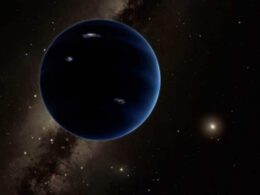One of the largest asteroids, Pallas, is now at its brightest and can be seen with binoculars or a small telescope. Pallas, which was the second asteroid to be discovered, reaches opposition on April 10, 2019, in the constellation of Bootes.
It will be at magnitude 7.9 for the first couple of weeks of April before gradually fading again. That is too faint to be seen without optical aid, but within reach of small binoculars in a clear, dark sky.
It will be easy to locate the patch of sky where you can see asteroid Pallas because it is close to Arcturus, also known as alpha (α) Bootis and one of the brightest stars in the heavens.
On the night of April 10/11, Pallas will pass particularly close to the star Eta (η) Bootis, which shines at magnitude 2.7 and so is easy to see with the unaided eye.
The asteroid is catalogued as 2 Pallas by the Minor Planet Center because it was the second to be found, after Ceres, on March 28, 1802. Its discoverer was Heinrich Olbers, a German member of a team dubbed the Celestial Police that had been set up to find a suspected missing planet between Mars and Jupiter.
It later transpired that the famous comet hunter Charles Messier had recorded Pallas as a star in a sketch he made nearly 23 years earlier, in April 1779, but he failed to recognise it.
Pallas is the third most massive asteroid, with a diameter of 512 km (318 miles), and it takes 4.62 years to make one orbit of the Sun. No space probe has visited, but its shape has been determined by observations with the Hubble Space Telescope and the SPHERE instrument on Europe’s Very Large Telescope (VLT) in Chile.
In composition, Pallas resembles a rocky type of meteorite called a carbonaceous chondrite. It is the third most massive asteroid, after Ceres and Vesta, and contains around 7% of the mass in the asteroid belt.
How to photograph Pallas
You can photograph Pallas for yourself, providing you have a camera that is able to take exposures lasting more than a few seconds. You must set the camera steady, so a tripod will be almost essential. For more advice, see our earlier report about the asteroid Iris.


